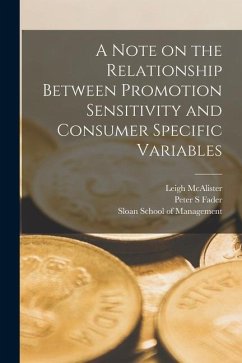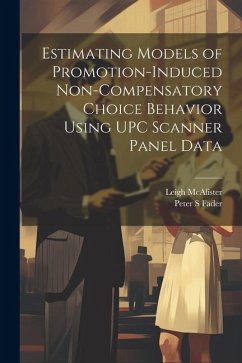Nicht lieferbar

Promotion Dynamics
Versandkostenfrei!
Nicht lieferbar
Firms spend a significant part of their marketing budgets on sales promotions. Since the impact of promotions on sales is usually immediate and strong, promotions are attractive to results-oriented managers seeking to increase sales in the short term. There are few, if any, other marketing instruments that are equally effective. Promotions also affect sales after the immediate sales bump. In other words, they have dynamic effects on consumer purchase behavior outside the period of the promotional offer. Promotion Dynamics presents a comprehensive overview of the various dynamic effects of prom...
Firms spend a significant part of their marketing budgets on sales promotions. Since the impact of promotions on sales is usually immediate and strong, promotions are attractive to results-oriented managers seeking to increase sales in the short term. There are few, if any, other marketing instruments that are equally effective. Promotions also affect sales after the immediate sales bump. In other words, they have dynamic effects on consumer purchase behavior outside the period of the promotional offer. Promotion Dynamics presents a comprehensive overview of the various dynamic effects of promotions. Since the literature on dynamic promotion effects is vast and quite scattered, and there have been so many researchers who have worked in this field across decades using very wide-ranging terminologies, methodologies, and data, there is a need to catalog the current state of affairs. To keep the discussion centered on a common theme, the authors focus in particular on the dynamic effects of price promotions (rather than non-price promotions) offered to consumers (rather than to the trade or to sales force). Promotion Dynamics has two target audiences: The first is marketing students and marketing professionals seeking insights into the dynamic effects of promotions. For this audience, the dynamic effects are illustrated with several graphs that show what has been found in the literature and indicate what managers can do with these findings. The second audience is academic researchers new to the promotions area who are interested in studying dynamic promotion effects. This audience will benefit not only from model equations and the literature summary but also will derive inspiration from suggestions for future research.









